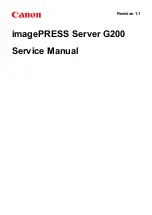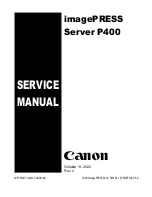
Note:
Changes are made periodically to the IBM Web site. The actual procedure
might vary slightly from what is described in this document.
1. Go to http://www.ibm.com/systems/support/.
2. Under
Product support
, click
System x
.
3. Under
Popular links
, click
Software and device drivers
.
4. Click
Dynamic System Analysis (DSA)
.
For additional information about tools for updating, managing, and deploying
firmware, see the System x and xSeries Tools Center at http://
publib.boulder.ibm.com/infocenter/toolsctr/v1r0/index.jsp.
Running the diagnostic programs
Important:
The DSA diagnostic programs do not support USB CD-ROM drives. If
you run the DSA diagnostic programs while any USB CD-ROM drives are attached,
ignore any optical drive test results that are returned for USB CD-ROM drives. You
can also remove USB CD-ROM drives before you run the DSA diagnostic programs
to get accurate optical drive test results. To remove a remotely mounted USB
CD-ROM drive, you might have to unmount the remote disk through the Remote
Supervisor Adapter II Web interface.
To run the DSA Preboot diagnostic programs, complete the following steps:
1. If the server is running, turn off the server and all attached devices.
2. Turn on all attached devices; then, turn on the server.
3. When the prompt
Press F1 For Configuration/Setup
, appears press F1.
4. From the Configuration/Setup Utility menu, select
Start Options
.
5. From the
Start Options
menu, select
Startup Sequence Options
.
6. Note the device that is selected as the first startup device. Later, you must
restore this setting.
7. Select
CD/DVD-ROM
as the first startup device.
8. Press Esc two times to return to the Configuration/Setup Utility menu.
9. Insert the
IBM Dynamic System Analysis Preboot Diagnostic
CD into the CD or
DVD drive.
10. Select
Save & Exit Setup
and follow the prompts. The diagnostic programs
start.
11. From the diagnostic programs screen, select the test that you want to run, and
follow the instructions on the screen.
Follow the actions in the “Diagnostic messages” on page 157 to solve the problem.
If the diagnostic programs do not detect any hardware errors but the problem
remains during normal server operations, a software error might be the cause. If
you suspect a software problem, see the information that comes with your software.
A single problem might cause more than one error message. When this happens,
correct the cause of the first error message. The other error messages usually will
not occur the next time you run the diagnostic programs.
Exception:
If multiple error codes or LEDs indicate a microprocessor error, the
error might be in a microprocessor or in a microprocessor socket. See
“Microprocessor problems” on page 145 for information about diagnosing
microprocessor problems.
156
System x3200 M2 Types 4367 and 4368: Problem Determination and Service Guide
Summary of Contents for 4367
Page 1: ...System x3200 M2 Types 4367 and 4368 Problem Determination and Service Guide ...
Page 2: ......
Page 3: ...System x3200 M2 Types 4367 and 4368 Problem Determination and Service Guide ...
Page 32: ...14 System x3200 M2 Types 4367 and 4368 Problem Determination and Service Guide ...
Page 50: ...32 System x3200 M2 Types 4367 and 4368 Problem Determination and Service Guide ...
Page 64: ...46 System x3200 M2 Types 4367 and 4368 Problem Determination and Service Guide ...
Page 138: ...120 System x3200 M2 Types 4367 and 4368 Problem Determination and Service Guide ...
Page 258: ...240 System x3200 M2 Types 4367 and 4368 Problem Determination and Service Guide ...
Page 265: ......
Page 266: ... Part Number 49Y0163 Printed in USA 1P P N 49Y0163 ...
















































